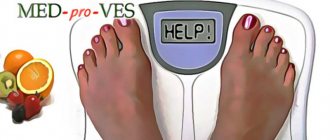Can there be a vitamin D deficiency in the summer?
To keep Vitamin D levels normal, you need to regularly bask in the sun for 15 to 30 minutes during the daytime, all year round, twice a week. Remember that in cloudy weather or in the shade, UV rays only partially pass through, and practically do not pass through glass and sunscreen with a protection factor of 8SPF.
Vitamin D, which your body needs so much, has a half-life of 15 days. This means that you cannot get it with interest for the whole year in the summer or during vacation. After a long winter, most people in Russia are deficient in vitamin D. The situation is this: your body has been deficient in vitamin D for 6 months (autumn and winter). Such a deficiency cannot be replenished in a few sunny days. That is why there can be a shortage even in the middle of summer.
Vitamin D is fat soluble. If you have intestinal diseases associated with poor absorption of fatty foods, or are overweight, this may cause an increased need for vitamin D. Of course, obesity in itself does not affect the skin’s ability to synthesize vitamin D. The pattern is this: the more subcutaneous fat , the more it captures vitamin D and reduces its entry into the blood.
You can check your vitamin D level tomorrow. Place your order on the website now with a 50% discount. If the results of the tests reveal that you have a deficiency or insufficiency of vitamin D, then according to the recommendations presented in the clinical guidelines “Vitamin D deficiency in adults: diagnosis, treatment and prevention”, treatment can last more than 2 months with increased doses of drugs containing vitamin D. This way you can raise and maintain it normal.
How does a lack of vitamin D manifest itself and why is it dangerous?
In the early stages, vitamin D deficiency is practically undetectable. Its symptoms are unsystematic, masking vitamin deficiency as a completely different disease. However, the presence of this problem can be determined by the following indirect signs:
- increased sweating (especially in the back of the head);
- poor posture (slouching);
- loss of appetite, sudden weight loss;
- insomnia;
- feeling of chronic fatigue (even after proper rest);
- dental problems;
- periodic aching pain in the joints.
With long-term vitamin deficiency, intestinal disorders occur, vision is impaired, heart function deteriorates, and the risk of developing cancer tumors increases.
Vitamin D deficiency is more pronounced in children. A deficiency of this substance at a young age threatens the development of such a serious disease as rickets . Parents should be alert to the following symptoms:
- late teething;
- delayed closure of fontanelles;
- increased sweating;
- sleep disturbance, loss of appetite;
- excessive tearfulness, irritability.
If the necessary measures are not taken in time, the consequences can be very disastrous. With rickets, irreversible changes in the skeletal structure occur: curvature of the legs, the formation of the so-called “chicken breast”, protruding joints, deformation of the bones of the skull and pelvic region. The latter is especially dangerous for girls, as it can complicate childbirth in the future.
Of course, a lack of vitamin D is a negative phenomenon. First of all, it is necessary to understand that this substance is necessary to support the immune system ; therefore, if it is deficient, colds will not take long to appear and the frequency of their occurrence will only increase.
We must also not forget that vitamin D, by its nature, is much closer to hormones, which means its deficiency can have a detrimental effect on the state of the endocrine system . In particular, this kind of vitamin deficiency can cause the development of diabetes.
Brittle and split hair, the appearance of dandruff and acne, the appearance of early wrinkles and age spots, deterioration of tooth enamel, caries - all this is a consequence of vitamin D deficiency in the body.
What happens in the body when there is a lack of vitamin D?
The main symptoms of vitamin D deficiency are:
- Bad mood;
- prostration;
- discomfort in bones and muscles;
- decreased visual acuity;
- increased sweating;
- frequent colds and acute respiratory viral infections.
The World Health Organization has initiated studies that confirm an increased risk of cancer of the breast, colon, prostate, endometrium, ovary, esophagus, stomach, pancreas, bladder, kidney due to vitamin D deficiency. Symptoms of deficiency are not obvious, the likelihood of deficiency is high, and the consequences could be significant.
The main task of vitamin D is to help absorb calcium, magnesium and phosphorus, which prevents bone softening. When there is a lack or deficiency of vitamin D, most of the calcium and phosphorus that the body gets from food or supplements is not absorbed, which can lead to brittle and soft bones.
Vitamin D affects the renewal of bone tissue. When calcium, phosphorus, and magnesium from food and supplements are not absorbed to maintain proper levels in the blood, the body begins to release calcium from the bones into the blood. Simply put, the body begins to sacrifice bones. In young people, the limbs are most often affected, and in older people, the spine is most often affected. This creates the risk of fractures. The approximate period for bone tissue renewal is 10 years. This means that if you are currently deficient in vitamin D, you may not feel its effects on your bones for several years.
When you take a calcium level test, the results may be normal. However, the process of softening the bones may already be underway. Chronic vitamin D deficiency can lead to the development of osteoporosis. A study by the British Medical Association demonstrated that normalizing vitamin D levels reduced the number of fractures of all locations by 22%, and fractures of the hip, wrist, forearm or vertebrae by 33%.
Are diseases related to deficiency?
Vitamin D deficiency plays a role in almost every serious disease. Among them:
Osteoporosis and osteopenia
- 17 types of cancer (including breast, prostate and colon cancer)
- Heart diseases
- High blood pressure
- Obesity
- Metabolic syndrome and diabetes
- Autoimmune diseases
- Multiple sclerosis
- Rheumatoid arthritis
- Osteoarthritis
- Bursitis
- Gout
- Infertility and PMS
- Parkinson's disease
- Depression and Seasonal Affective Disorder
- Alzheimer's disease
- Chronic fatigue syndrome
- Fibromyalgia
- Chronic pain
- Periodontal disease
- Psoriasis
Insufficient levels of vitamin D in the blood are associated with many diseases, such as diabetes, hypertension, multiple sclerosis and some types of cancer. However, research has not yet determined whether vitamin D can prevent or treat them.
Groups at risk of vitamin D deficiency
According to the results of a study by the Federal State Budgetary Institution “Federal Research Center for Nutrition and Biotechnology,” up to 97% of Russians experience vitamin D deficiency, depending on the region and health status
Russia is not the sunniest country. Most regions, for example, Moscow, St. Petersburg, Nizhny Novgorod, have a relatively small number of sunny days. This prevents your skin from getting the right amount of sunlight to produce the required amount of vitamin D.
You can only get 20-30% of your daily requirement for vitamin D from your daily diet. Additionally, the risk of deficiency becomes even more likely if you are allergic to milk or fish, lactose intolerant, or if you are a vegetarian.
There are five main risk groups for vitamin D deficiency.
1. Office workers and people who spend most of the day indoors.
This category of people is not exposed to the sun most of the day, which means that the skin cannot produce vitamin D in the amount necessary to maintain vitamin D levels of at least 30 ng/ml. In addition, many companies have a dress code - arms and legs are covered and even on sunny days the light does not fall on them. If you spend most of your sunny days indoors, you might want to check your vitamin D levels.
Get tested and bring the results to the endocrinologist. If necessary, he will prescribe treatment for you.
You can take a set of tests for vitamin D and calcium deficiency with a 50% discount. The analysis will be ready within 1 day. You will receive the results by email as soon as they are ready.
2. Overweight people.
As we have already said, most of the population has insufficient levels of vitamin D, and overweight people require 2-3 times more to maintain normal levels. This is due to the fact that vitamin D is fat soluble and can be stored in those fat deposits instead of performing its functions. It’s easy to conclude that overweight people should pay attention to their vitamin D levels. By learning about vitamin D deficiency and correcting it to normal, a person will not immediately become slim, but will avoid brittle bones, muscle weakness, calcium deficiency and other consequences.
More and more studies show that vitamin D can play a role in the prevention and treatment of diabetes mellitus types 1 and 2, impaired glucose tolerance and insulin resistance, acute respiratory infections and acute respiratory viral infections, inflammatory bowel diseases and other pathologies.
3. People over 50 years old.
With age, the production of vitamin D by the skin decreases and the absorption of fat in the intestines deteriorates (we remind you that vitamin D is fat-soluble).
Studies have confirmed that increasing vitamin D to normal levels leads to a significant reduction in falls and fractures in older adults. For example, people over 65 fell 72% less often after 5 months of treatment for vitamin D deficiency. This is because muscle weakness due to insufficient vitamin D levels leads to imbalance.
The manifestation of a long-term lack of vitamin D is the possible development of osteoporosis. For a patient with osteoporosis, even minor injuries can result in a fracture. Osteoporosis is most often associated with insufficient calcium intake, but insufficient vitamin D contributes to osteoporosis by reducing the absorption (absorption) of calcium. If vitamin D levels are normal, bone strength is maintained. This greatly helps prevent osteoporosis in older people.
It is important to note that in the presence of an osteoporotic fracture, the prevalence of vitamin D deficiency can be as high as 100%.
Don’t wait for your parents and grandparents to be prescribed a set of vitamin D and calcium tests by your therapist. Add them as patients in your personal account and order an analysis for them. You can order an analysis even if they are located in another city. Your family will only have to come to the medical center of your choice and take a comprehensive test for vitamin D and calcium deficiency.
4. Women during menopause and postmenopause.
Healthy bone is constantly being remodeled. During menopause, the balance between these processes changes. As a result of this imbalance, the bones lose more calcium, phosphorus and magnesium than they absorb. Therefore, the usual lifestyle, within which there was enough vitamin D to maintain the necessary balance of calcium, phosphorus and magnesium, may require changes. At the same time, in Russia, 74-83.2% of postmenopausal women have a vitamin D level of less than 30 ng/ml (insufficient level).
As we have already said, long-term vitamin D deficiency can lead to the development of osteoporosis. Hormone therapy with estrogen and progesterone may slow the onset of osteoporosis. Several medical groups and professional societies support the use of HRT (hormone replacement therapy) as an option for women who are at increased risk of osteoporosis or fractures. Every woman should discuss this issue with her doctor.
One study found a 60% reduction in overall cancer risk among 1,179 healthy postmenopausal women treated with vitamin D and calcium compared with placebo over a 4-year follow-up period. Optimal levels of 25(OH)D in serum for the prevention of cancer, according to research, are 40-60 ng/ml (100-150 nmol/l).
5. Pregnant women and those who are thinking about becoming a mother.
In a study, Belgian scientists found that 86% of pregnant women had vitamin D levels below the normal level of 30 ng/ml. It is also known that the level of vitamin D of mother and child is directly related and has a high degree of dependence.
In the first and second trimesters, most of the organs and systems of the body are formed and formed in the fetus. In the third trimester, skeletal calcification begins, which significantly increases the need for calcium. And calcium, as you and I already know, is better absorbed when the level of vitamin D in the blood is normal. Therefore, women during pregnancy and breastfeeding are recommended to maintain the level of D 25-OH in the blood more than 30 ng/ml. It is not necessary to give vitamin D to infants without a doctor's prescription - it is enough for the mother to maintain it at normal levels.
Most multivitamins for pregnant and breastfeeding women contain less vitamin D (0-500 IU, average 305 IU) and calcium (0-200 mg, average 80 mg) than needed. Some experts recommend that pregnant and breastfeeding women take at least 800-1000 IU of vitamin D per day as a preventive measure, of course, discussing the dosage with your doctor. If a deficiency is detected, the dosage may be significantly higher (1500-4000 IU/day).
Treatment: drugs
Pharmacies offer a wide selection of medications containing vitamin D. They differ in the form of release, effectiveness and, accordingly, price. List of the best drugs:
- Calcium-D3 Nycomed. Available in the form of chewable tablets with fruit flavor. It is recommended to take the drug for adults and children over 6 years of age.
- Aquadetrim. Prescribed to premature children and infants as a prevention of calciferol deficiency. Available in the form of drops. Before use, the medicine must be dissolved in a small amount of water.
- Alpha D3-Teva. Approved for use by adults and children over 6 years of age. The drug is sold in capsules that contain a solution of calciferol in oil.
- Tevabon. Used to treat osteoporosis. The medication is available in both capsules and tablets.
- Complivit Calcium D3. Sold in tablets that are best chewed. The drug is well suited for women, as it effectively combats brittle nails.
- Vitrum Calcium + Vitamin D3. Used to prevent osteoporosis. The tablet should be taken before or during a meal, swallowing it whole.
- Etalfa. The medicine is manufactured in Denmark in the form of drops or capsules. Moreover, the capsules contain sesame oil. Used in the treatment of rickets and osteoporosis.
- Calcemin. Contains a complex of elements: calcium, copper, vitamin D, zinc, manganese.
- Van Alpha. It has proven itself in the treatment of rickets and restoration of the thyroid gland. Created in tablet form on the basis of a synthesized analogue of calciferol - alfacalcidol.
- Natekal D3. Contains calcium. The medication restores hormonal levels. Available in the form of chewable tablets that are taken after meals.
- Vitrum Osteomag. Designed specifically for the treatment of injuries to the musculoskeletal system. Sold in tablets.
When taking any medication, you should strictly follow the dosage according to the instructions or doctor's recommendation.
How to Monitor Vitamin D Levels
The 25-OH vitamin D test is the best way to monitor vitamin D. It reflects the amount of the vitamin your skin produces and what you get from food and supplements. Once you receive the test result, you can compare it with the recommended standards and decide whether to take supplements or not. If Vitamin D is normal, you will know that it is worth maintaining your normal lifestyle.
The norm of vitamin D 25-OH is determined by the Russian Association of Endocrinologists. The following indicators are distinguished:
- less than 20 ng/ml - deficiency
- less than 30 ng/ml - insufficiency
- from 30 to 100 ng/ml is an adequate level.
Residents of big cities lack sun at any time of the year.
| Interpretation of 25(OH)D concentrations accepted by the Russian Association of Endocrinologists | ||
| Classification | Blood 25(OH)D level ng/ml (n/mol/l) | Clinical manifestations |
| Severe vitamin D deficiency | <10 ng/ml (<25 n/mol/l) | Increased risk of rickets, osteomalacia, secondary hyperparathyroidism, myopathy, falls and fractures |
| Vitamin D deficiency | <20 ng/ml (<50 n/mol/l) | Increased bone loss, secondary hyperparathyroidism, falls and fractures |
| Vitamin D deficiency | ≥20 and <30 ng/ml (≥50 and <75 nmol/l) | Low risk of bone loss and secondary hyperparathyroidism, neutral effect on falls and fractures |
| Adequate Vitamin D Levels | ≥30 and <30 ng/ml* (≥75 nmol/l) | Optimal suppression of parathyroid hormone and bone loss, reducing falls and fractures by 20% |
| Levels with Possible Vitamin D Toxicity | >150 ng/ml (>375 nmol/l) | Hypercalcemia, hypercalciuria, nephrocalcinosis, calciphylaxis |
Doctors recommend including sources of vitamin D in your diet or taking supplements. Most vitamin D is found in foods such as fatty fish and fish oil. It is also found in beef liver, cheese, egg yolks and some mushrooms.
You should also be in the sun regularly, but remember, it can be harmful due to UV rays.
| Sources of vitamin D in food | |
| Natural food sources | ME vitamin D (D2 or D3) |
| Wild salmon | 600–1000 ME per 100g |
| Farm raised salmon | 100–250 ME per 100g |
| Herring | 294–1676 ME per 100g |
| Som | 500 ME per 100g |
| Canned sardines | 300–600 ME per 100g |
| Canned mackerel | 250 ME per 100g |
| Canned tuna | 236 ME per 100g |
| Fish fat | 400–1000 IU per 1 tablespoon |
| UV irradiated mushrooms | 446 ME per 100g |
| Mushrooms not irradiated with UV | 10–100 IU per 100g |
| Butter | 52 ME per 100g |
| Milk fortified with vitamin d | 2 ME per 100g |
| Sour cream | 80–100 ME per 100g |
| Egg yolk | 52 ME per 100g |
| Cheese | 2 ME per 100g |
| Beef liver | 44 ME per 100g |
Vitamin D increased: what to do
High levels of vitamin D can lead to anorexia, weight loss, increased urine output, and cardiac arrhythmia. Remember that vitamin D can increase blood calcium levels. This will lead to calcification of blood vessels and tissues. This can cause damage to the heart, blood vessels and kidneys. Therefore, during the period of taking additional vitamin D, we recommend getting tested at least once every 6 months.
It is recommended to check your vitamin D level before starting its correction and after treatment. This will allow you to monitor changes in levels over time and evaluate the effectiveness of treatment. At Lab4U you can take a comprehensive test for vitamin D and calcium deficiency with a 50% discount . You will receive the results by email. They will also be available in your personal account. Now it is very easy to observe the dynamics of changes in the body’s indicator.
According to research by the Russian Association of Endocrinologists, an excess is only possible with an overdose of vitamin D - consumed in doses exceeding those recommended by the attending physician.
How does a lack of vitamin D affect the condition of bone tissue?
It is believed that a lack of vitamin D is one of the main causes of the development of bone pathologies. However, in reality everything is somewhat different. Of course, the “sunshine” vitamin is a key element in maintaining the health of the musculoskeletal system. It depends on him how quickly and in what volume the bones will receive the calcium they need. However, vitamin D is capable of delivering this valuable cargo exclusively to the bloodstream and is not responsible for its further fate.
With osteoporosis, the leaching of minerals from bones becomes truly catastrophic. However, it is impossible to reverse this negative process by consuming excessive doses of calcium in combination with vitamin D. Moreover, such therapy can further aggravate the patient’s condition, since excess calcium is no less dangerous than its deficiency.
It is possible to restore bone mineral density only if metabolic processes function correctly, and this, in turn, depends on the state of the hormonal background. An ideal remedy for normalizing the functioning of the endocrine system is a natural product of anabolic action, drone homogenate. Based on this natural component, the preparations “Osteo-Vit” and “ Osteomed Forte ” are produced.
"Osteo-Vit" - natural vitamins for nourishing bones, preventing osteoporosis and rickets. Recommended in conditions of autumn-winter vitamin deficiency resulting from a lack of sunlight. An important feature of this drug is the absence of elemental calcium in its composition in the presence of vitamin D3. The combination of drone homogenate and cholecalciferol allows you to normalize metabolism and use the calcium that is concentrated in the blood and soft tissues in the processes of bone formation . Thus, it is possible not only to increase bone mineral density , but also to avoid hypercalcification of the body .
The drug " Osteomed Forte" is recommended for severe destruction of the skeletal system and fractures of varying complexity. Its unique action allows you to stimulate anabolic processes, restoring the mechanisms of calcium intake and retention in the bones. For additional nutrition of osteo-forming cells, the drug is enhanced with bioavailable calcium in the form of citrate, as well as vitamin D3.
When to Monitor Vitamin D Levels
Bend your finger if you:
- use sunscreen regularly
- have problems with the intestines or liver
- over 50 years old
- experience joint pain or muscle weakness
- observe signs of calcium deficiency in the body
- taking Vitamin D or calcium supplements
- are overweight
If you have bent 2 or more fingers, we recommend taking a set of tests for vitamin D and calcium deficiency. It doesn't hurt, it's very simple and quick.
What kind of substance, what is the daily requirement?
There are now two known active forms of calciferol needed by humans:
- D 2 - a synthetic form of plant origin, formed in the human body under the influence of UV rays of the sun on the epidermis;
- D 3 is a natural form that can be obtained from animal foods (meat, dairy, fish).
The daily dosage is individual and depends on age, first of all. For adults it is like this:
- for teenagers and people under fifty years of age - 400 IU;
- for pregnant and nursing mothers - 500 IU;
- for elderly people 1200 IU.
Why you need a comprehensive vitamin D test
Even if you take the Vitamin D25-OH test, you will not see the full picture of the vitamin’s effect on the body. Conversely, if you determine what level of calcium, phosphorus or magnesium you have in your body, you will need to find out the possible reasons for these levels. This will allow you to prescribe the most effective treatment.
Therefore, medical experts of the online laboratory Lab4U have developed a special complex - Examination for vitamin D and calcium deficiency. It will allow you to comprehensively study the effect of vitamin D on phosphorus-calcium metabolism and the body as a whole, as well as prevent possible negative consequences of a lack or excess of vitamin D.
Get tested and bring the results to your doctor. If necessary, he will prescribe treatment for you.
You can take a complex test for vitamin D and calcium deficiency with a 50% discount. The analysis will be ready within 1 day. You will receive the results by email as soon as they are ready.
Nutrition
To avoid a lack of calcium and vitamin D in the body, you should pay special attention to your daily nutrition. List of foods containing large amounts of calciferol:
- fish fat;
- fish (mackerel, trout, sturgeon, salmon, tuna, halibut);
- egg yolk;
- mushrooms (chanterelles, morels, champignons, porcini mushrooms);
- cheese (cheddar, parmesan, mozzarella, feta);
- dairy products (butter, milk);
- poultry and animal fat.
When preparing foods, you need to follow simple rules to maximize the preservation of calciferol in them. For example, meat and fish should be thawed slowly and not re-frozen. When baking food, it is better to additionally use a sleeve or foil. If meat needs to be cooked, it is recommended to immerse it in boiling water, and prepared dishes should not be reheated many times. Then vitamin D will enter the body in full.










